Discovering Traditional Food in Bohol: A Culinary Adventure in the Philippines
Have you ever imagined a place where every meal feels like an adventure? That’s Bohol for you! Nestled in the heart of the Philippines, this island province isn’t just about the iconic Chocolate Hills or the pristine Panglao beaches. It’s a hidden treasure for food enthusiasts and a top destination for culinary explorers. Each visit to Bohol has been a journey through an array of flavors that define the soul of Boholano cuisine, making it a must-try experience for anyone visiting the Philippines.
Importance of Traditional Food in Boholano Culture
Traditional food in Bohol is more than just a gastronomic delight. It’s a cultural tapestry woven with history, local customs, and a sense of community. When you indulge in Boholano dishes, you’re not just tasting food, you’re experiencing the essence of the Boholano spirit. From the bustling streets of Tagbilaran City to the scenic countryside attractions of Loboc, every dish has a story to tell, embodying the rich culture and vibrant lifestyle of this beautiful island province.
Exploring the Unique Flavors of Bohol
| Dish Name | Description |
|---|---|
| Peanut Kisses | Nutty pastries shaped like the Chocolate Hills, blending crunchy peanuts and sweet meringue, deeply rooted in Bohol’s culture. |
| Calamay | A sticky and sweet delicacy made from glutinous rice, coconut milk, and brown sugar, traditionally packaged in coconut shells. |
| Ube Kinampay | A variety of purple yam unique to Bohol, used in various traditional desserts and dishes, known for its vibrant color and taste. |
| Chorizo de Bohol | A sweet and uniquely spiced Boholano version of chorizo, differing from other regional varieties in the Philippines. |
| Sikwate (Traditional Hot Chocolate) | A traditional Filipino hot chocolate made from locally produced cacao tablets, often enjoyed with suman (sticky rice cakes). |
| Malunggay-based Drinks | Healthful beverages made from malunggay (moringa), known for their nutritional benefits and unique taste. |
| Crab Cooked in Coconut Milk (Ginataang Alimango) | Crabs simmered in rich coconut milk with a blend of spices, showcasing Bohol’s fresh seafood and local flavors. |
| Grilled Fish with Local Herbs (Inihaw na Isda) | Fresh fish marinated in local herbs and spices, grilled to perfection to enhance its natural flavors. |
| Prawn Sinigang (Sour Soup) | A Filipino sour soup given a Boholano twist with the addition of fresh prawns, balancing tanginess with seafood sweetness. |
| Squid Adobo (Adobong Pusit) | A classic Filipino dish with a Boholano touch, combining tender squid with a rich, savory-sweet adobo sauce. |
Significance of Local Ingredients and Cooking Methods
In Bohol, the secret to their exquisite dishes lies in the freshness of local ingredients – think of succulent seafood straight from the Visayas seas, organic vegetables from local farms, and the distinct flavor of coconut milk in various dishes. Traditional cooking methods, passed down through generations, also play a crucial role. The slow-cooking process in clay pots enhances the flavor of the food, showcasing the Boholano’s mastery of culinary arts.
Influence of History on Bohol’s Culinary Practices
The culinary landscape of Bohol is a reflection of its rich history and a key attraction for visitors to this Philippine destination. The influence of Spanish colonization is evident in dishes like the beloved Chorizo de Bohol, a popular local delicacy. Boholano cuisine stands out for its fusion of flavors, distinctively blending traditional methods with modern culinary trends.
Signature Delicacies of Bohol
Peanut Kisses

Historical Background and Cultural Significance
Peanut Kisses, a renowned Bohol delicacy, are more than just a treat, they’re a symbol of the island’s culinary creativity. Shaped like the famous Chocolate Hills, these nutty pastries are a delightful fusion of crunchy peanuts and sweet meringue. Their origin is deeply rooted in Bohol’s history and culture, making them a popular local delicacy and a perfect pasalubong, or souvenir, for visitors.
Unique Preparation and Ingredients
Crafted from local peanuts and egg whites, these little bites of heaven offer a crunchy texture and a sweet, nutty flavor. It’s fascinating how such simple ingredients create a pastry now synonymous with Boholano hospitality, showcasing the best of Bohol’s culinary offerings.
Calamay
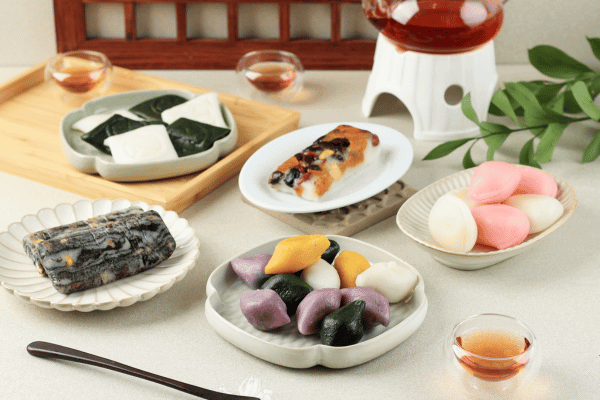
Traditional Methods of Preparation
Calamay, a must-try food in Bohol, is a testament to the province’s rich culinary heritage. This delicacy is made of glutinous rice, coconut milk, and brown sugar, traditionally prepared in a labor-intensive process. Intriguingly, it’s packaged in traditional bamboo containers, sealed with a red band, making it not just a treat but also a work of art.
Variations and Modern Interpretations
While traditional Calamay remains a favorite, modern twists have been introduced, showcasing Boholano innovation in cuisine. These variations cater to every sweet tooth, making Calamay a versatile and evolving symbol of Bohol’s rich culinary tradition.
Ube Kinampay

Role in Boholano Cuisine and Culture
Ube Kinampay, a variety of purple yam unique to Bohol, is a cherished ingredient in many Boholano dishes. Its vibrant color and distinct taste elevate simple dishes into culinary masterpieces, reflecting the agricultural richness of the island.
Uses in Various Boholano Dishes
Ube Kinampay is versatile, used in both traditional desserts and modern dishes. It’s a key ingredient in many festive and everyday dishes, making it a staple in Boholano kitchens and a must-try for anyone visiting this beautiful island province.
Chorizo de Bohol
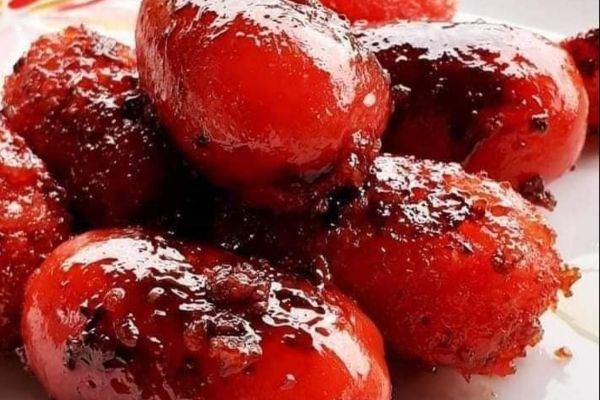
Comparison with Other Regional Varieties
Chorizo de Bohol, distinct from its counterparts in other parts of the Philippines, is sweeter and spiced uniquely, reflecting the island’s culinary preferences. This popular Boholano delicacy offers a taste of the diverse flavors of Bohol.
Tips on Where to Find the Best Chorizo de Bohol
For the best Chorizo de Bohol, explore local markets in Tagbilaran City or visit renowned eateries across the island. Each location offers its own twist on this popular delicacy, adding to the rich tapestry of Boholano cuisine.
Bohol’s Beverage Heritage
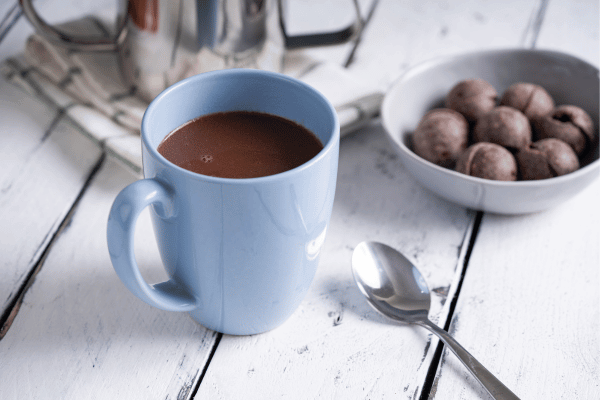
Sikwate (Traditional Hot Chocolate)
Sikwate, a beloved traditional Filipino hot chocolate, is a staple in Bohol. Made from locally produced tablea (cacao tablets), this rich and comforting beverage connects you to Bohol’s agricultural roots. Traditionally whisked using a ‘batirol’, Sikwate is a must-try for those looking to experience authentic Boholano flavors.
Best Places to Try Sikwate in Bohol
For an authentic Sikwate experience, head to the Tablea de Maria Clara Café in Tagbilaran City. Here, you can savor this traditional chocolate drink, often paired with Filipino favorites like suman (sticky rice cakes).
Malunggay-based Drinks
Health Benefits and Culinary Uses
Malunggay, known for its nutritional benefits, is a common ingredient in Boholano cuisine. Recently, it has gained popularity in the form of healthful beverages, offering unique taste experiences that are both nutritious and delicious.
Popularity at Local Cafes and the Bohol Bee Farm
Local cafes and the famous Bohol Bee Farm are great places to try these healthful malunggay-based concoctions. Combining malunggay with other local ingredients, these venues create refreshing and health-boosting drinks that reflect the innovative spirit of Boholano cuisine.Don’t forget to try the malunggay ice cream too.
Boholano Seafood Delights
Bohol, surrounded by the bountiful waters of the Visayas, is a haven for seafood enthusiasts. The freshness and diversity of its seafood are unparalleled, making it a key attraction for those seeking a gastronomic adventure.
Popular Seafood Dishes
Bohol’s seafood cuisine, a reflection of its marine life and culinary traditions, offers a plethora of must-try dishes:
Crab Cooked in Coconut Milk (Ginataang Alimango)

This dish, a celebration of local flavors, features crabs simmered in rich coconut milk, infused with a unique blend of spices. It exemplifies how Boholanos combine fresh ingredients to create a symphony of flavors, making it a popular choice in Bohol’s eateries and a must-try for seafood lovers.
Grilled Fish with Local Herbs (Inihaw na Isda)
Simple yet delightful, this dish lets the natural flavors of fresh fish, marinated in local herbs and spices, shine through. The smoky aroma from the grill enhances each bite, offering a taste of Bohol’s coastal charm.
Prawn Sinigang (Sour Soup)
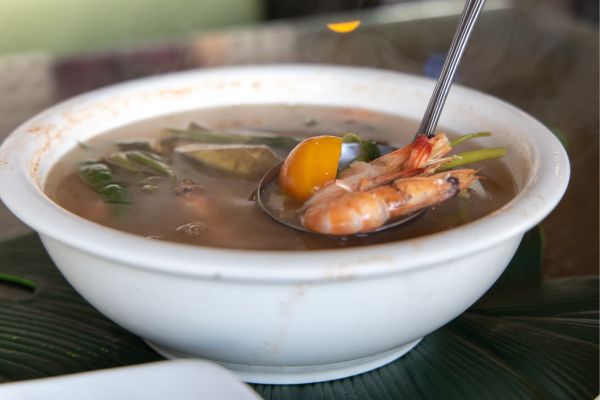
Sinigang, a Filipino sour soup, is given a local twist in Bohol with the addition of fresh prawns. The soup’s tanginess, paired with the sweetness of the prawns, creates a comforting and appetizing dish that perfectly represents the island’s culinary diversity.
Squid Adobo (Adobong Pusit)

This classic Filipino dish, with a Boholano touch, combines tender squid with a rich, savory-sweet adobo sauce. It’s a testament to the island’s culinary ingenuity and a favorite among both locals and tourists.
Pasalubong – Taking a Piece of Bohol Home
Pasalubong is a beautiful Filipino tradition of bringing home gifts from your travels. In Bohol, this tradition comes alive with an array of unique food souvenirs.
Best Food Souvenirs and Where to Buy Them
Bohol’s markets and souvenir shops offer a variety of treats that are perfect for sharing a piece of your journey:
Peanut Kisses from Tagbilaran City Markets
These nutty, meringue-like treats, shaped like the Chocolate Hills, are a staple souvenir, available at most markets in Tagbilaran City.
Calamay from Jagna
This sticky and sweet delicacy, traditionally packaged in coconut shells, is famously produced in Jagna. It’s a sweet and sticky souvenir that perfectly encapsulates the flavors of Bohol. You can find them in most places even in the streets as it is also considered as a street food.
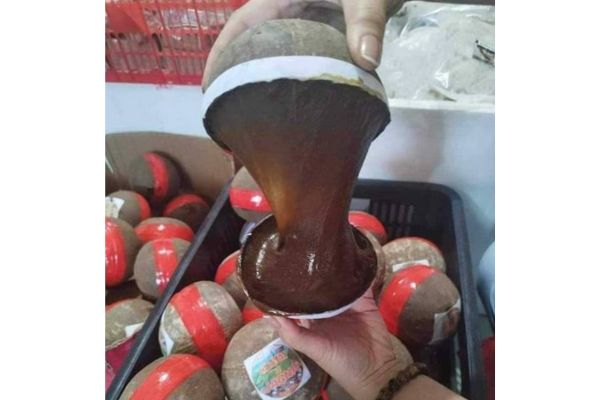
Ube Kinampay Products from Baclayon
Baclayon offers a variety of ube-based products like jams and pastries, available in local stores. These items, rich in flavor and color, are a testament to the agricultural richness of Bohol.
Tablea (Chocolate) from Bohol Bee Farm
For chocolate enthusiasts, Bohol Bee Farm’s tablea is a must-buy. This rich, pure chocolate, used in Sikwate or as a baking ingredient, is a versatile and delicious souvenir.
How Pasalubong Reflects Boholano Hospitality
The tradition of pasalubong, deeply rooted in Filipino culture, reflects the warmth and generosity of Boholanos. By taking these treats home, you’re not just carrying a souvenir but also a part of Bohol’s hospitable spirit.
Popular Boholano Eateries and Restaurants
Bohol’s diverse array of eateries and restaurants caters to all tastes and preferences. From fine dining experiences to casual beachside meals, the island offers a plethora of options for enjoying traditional Boholano cuisine.
Top Places to Experience Traditional Boholano Cuisine

For an authentic taste of Bohol, explore the local eateries in Tagbilaran City or the quaint restaurants in Baclayon and Panglao. These places offer a range of traditional dishes, prepared with the same love and care as in a Boholano home.
Recommendations for Different Dining Preferences
Bohol’s culinary scene is inclusive, offering options for every diner. From vegan dishes featuring local ingredients like malunggay to seafood delicacies showcasing the island’s rich marine life, there’s something for everyone. For those with a sweet tooth, the pastries and desserts made with local ingredients like ube and calamay are a must-try.
Final Thoughts
In Bohol, food is more than sustenance, it’s a connection to the island’s rich history and vibrant culture. Each dish tells a story of the land, the people, and their traditions. Exploring traditional food in Bohol offers a deeper appreciation of this beautiful island province.
So, if you’re planning a trip to the Philippines, include Bohol in your itinerary. Not just for its scenic views and historic sites, but for a culinary adventure that will tantalize your taste buds and warm your heart.